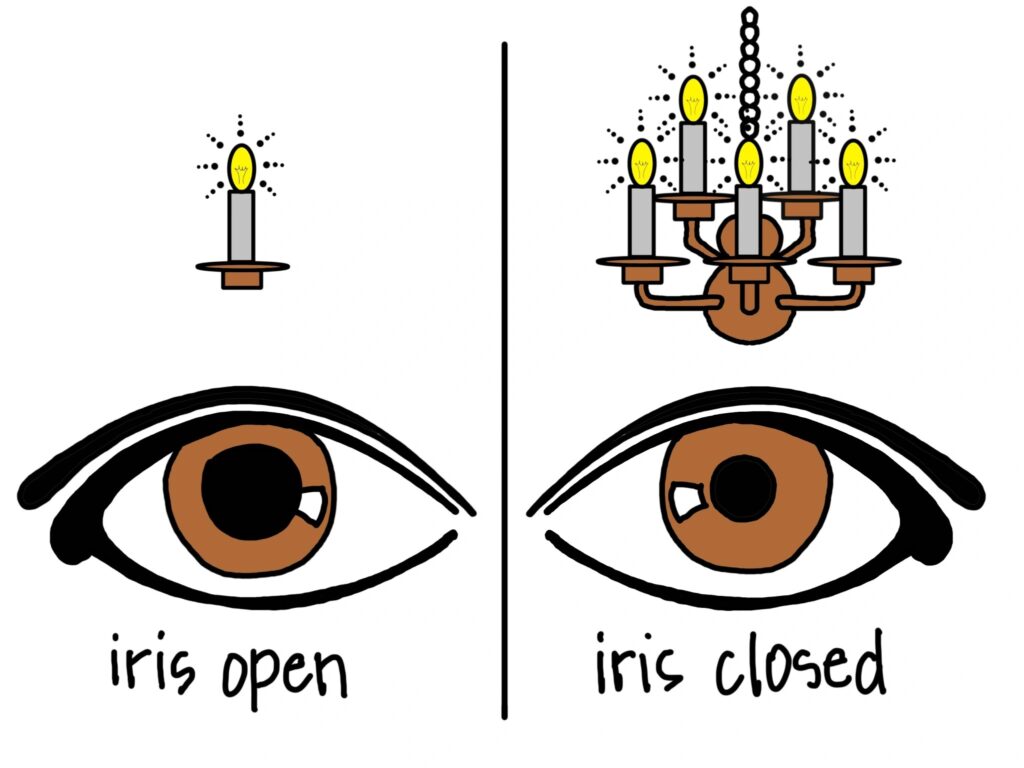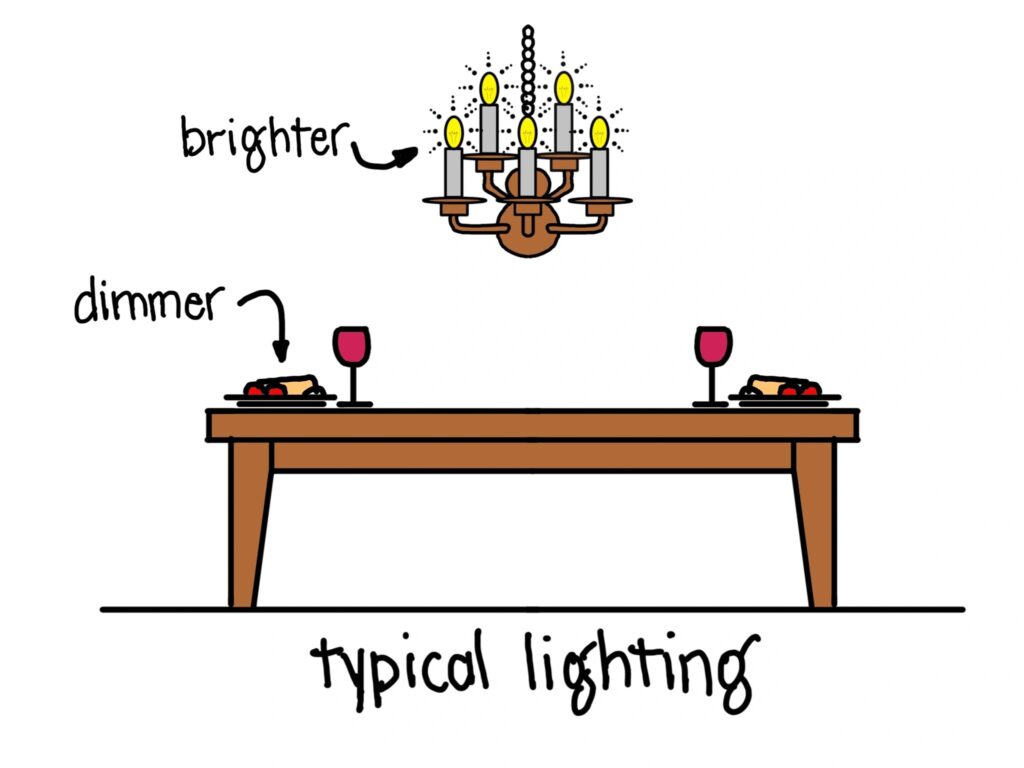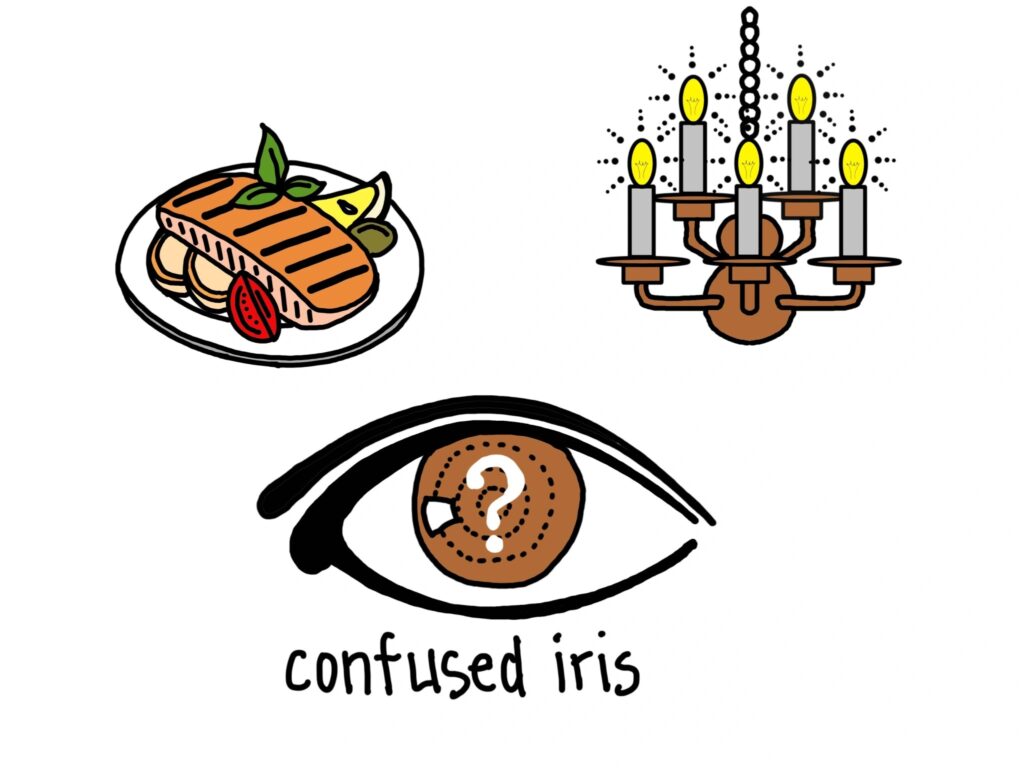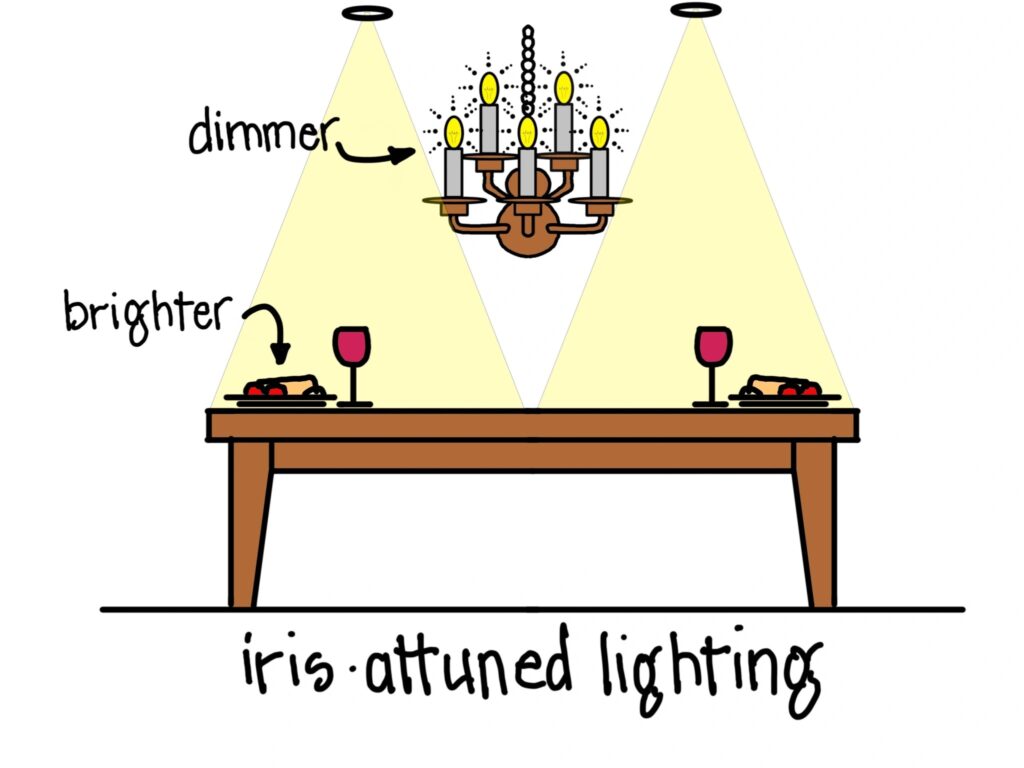I am an unabashed lighting geek. I love learning about the science, technology, art, and technique of lighting design, I dig into light and health, and I always, always want to get my hands on product so I can see it for myself.
At every step of my geeky journey, the irises in my eyes are constantly flexing so that I can see what I am doing better. Every. Waking. Moment.
Lighting designers like myself are often accused of “overcomplicating” light. In reality, the opposite is true- we take an extraordinarily complicated field and simplify it into useable information: put this light in this place for this result. The existence of the iris is just one example of this simplification. Very rarely do we subject our clients to an in-depth lecture on the iris. Or the cornea, or the retina, or the optical nerve. Instead, we simplify what we know.
But let’s geek out for a minute. The iris is pretty cool.

Every light fixture we specify delivers photos to human eyes. Inside those eyes, the irises of our clients adjust continually in pursuit of optimal sensitivity. This is pretty basic science, but it is astounding how often this is overlooked in homes, offices, and buildings of every variety. Let me give you an example:

Statistically speaking (and I am going to totally make this one up), 96.3% of dining rooms in our homes have a chandelier above the table. This beautiful pendant is ostensibly there to light the table, right? So we can see our food?
In reality, most chandeliers do a better job of lighting the ceiling (the bulbs point up because hundreds of years ago candles had to point up) than lighting the table. That’s where our iris comes in to play. Does it close down to match the extreme brightness of the chandelier bulbs? Or does it open up so we can see our plate better?

Our iris gets confused. It opens up to see our plate. It closes down to shield our eyes from the glare of the chandelier. It adjusts to see the person across the table from us. It opens up to see our plate. And so on.
This constant adjusting can cause eyestrain and fatigue (after all, our iris is working hard in this environment). Most of us have just come to accept the lighting in our homes and we do not even know that it could be better- and that better lighting can help us live better lives.
The solution is to attune our lighting to the iris. What should be the brightest spot in the room? Once we know, we can shift light to where it is needed most. Dimming the chandelier makes it look prettier, and adds a pleasing soft glow to the faces of our guests. Pushing light to the table makes the china sparkle and the food more appetizing. The mood is better, our eyes are happier. All because lighting geeks paid attention to the iris.

I get it. Not everyone has the time, interest, or inclination to be a lighting geek. That’s okay. We want to keep our jobs, so please let us do what we do.
It’s all about you, not us. It’s all about your iris.
